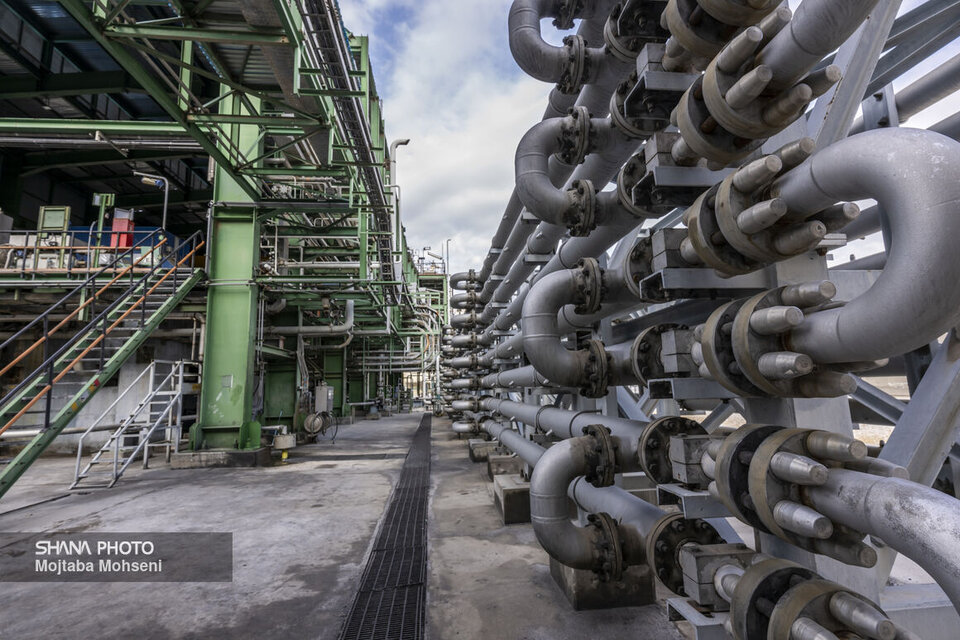Following the Islamic Revolution, Iran’s petrochemical sector accelerated its development, playing a crucial role in the nation’s economic plans from 1979 to 2024.
Today, with an annual production capacity of over 96 million tons and revenues surpassing $23 billion, the industry accounts for 30% of Iran’s non-oil exports. This report examines the growth of Iran’s petrochemical industry post-revolution, based on the country’s first to seventh development plans and the performance of the 14th administration in this sector.
The Islamic Revolution (1979)
By the time of the Islamic Revolution in 1979, Iran’s petrochemical industry was about 15 years old. Its primary focus had been meeting domestic demand for chemical fertilizers and basic petrochemical materials.
Key complexes such as Razi (Shahpur), Abadan, Pazargad, Carbon Ahvaz, Kharg, Farabi (Iran-Nippon), and parts of Shiraz and Bandar Imam Petrochemical Complexes had already been established.
By 1977, the industry’s production capacity reached approximately 3 million tons of intermediate and final products, with total investments in the National Petrochemical Company (NPC) amounting to around 110 billion rials.
The Sacred Defense Era (1980-88)
From the revolution until mid-1988, NPC’s activities were largely focused on supporting the war effort, alongside designing and preparing the Arak and Isfahan complexes.
The only major project completed during this period was the expansion of the Shiraz Petrochemical Complex. After the acceptance of UN Resolution 598 in 1988, NPC began rebuilding and modernizing its facilities. Investments during this period reached 420 billion rials, enabling the completion of the Shiraz Petrochemical Complex (ammonia and urea 2) and the chlor-alkali project, while initiating the Shiraz methanol, Arak Petrochemical Complex, and Razi di-ammonium phosphate projects.
By 1988, Shiraz Petrochemical Complex reached its highest post-revolution production levels, with total output reaching 880,000 tons, including 270,000 tons of sulfur exports worth $26 million and domestic sales of 430,000 tons valued at 5 billion rials.
First Development Plan (1989-94)
During the first development plan, efforts were made to rebuild war-damaged complexes, and several key projects, including Isfahan, Arak (Phase 1), and Bandar Imam complexes, were completed.
The plan aimed to meet downstream industry needs, reduce imports, diversify the economy, and promote domestic technology. Ten new projects were launched, increasing NPC’s production capacity from 5.3 million tons in 1989 to 10.3 million tons in 1994, with investments totaling 7,085 billion rials.
Second Development Plan (1995-99)
The second five-year plan focused on increasing profitability, expanding exports, privatizing, and diversifying products. By 1999, annual production reached 11 million tons, with investments totaling 8,123 billion rials.
Domestic sales grew to 3.8 million tons worth 4,300 billion rials, while exports reached 2.9 million tons valued at $580 million. The petrochemical sector’s share of non-oil exports rose to 17.2%, and its share of industrial exports reached 30.7%.
Third Development Plan (2000-2004)
The third plan emphasized optimizing existing capacities, modernizing old units, producing higher-value products, and expanding exports.
By 2004, annual production capacity reached 18 million tons, with exports totaling 5.2 million tons worth $1.7 billion and domestic sales of 4.8 million tons valued at 12.6 trillion rials.
Fourth Development Plan (2005-10)
This period focused on using gas-based hydrocarbons to expand the value chain, increase production capacity, and attract private investment. Forty projects with a total capacity of 34.3 million tons were completed.
Fifth Development Plan (2011-16)
The petrochemical industry continued its rapid growth, adding 10.5 million tons of production capacity through 26 projects, mostly executed by the private sector.
Sixth Development Plan (2017-23)
By late-March 2024, 25 petrochemical projects with a total capacity of 33.6 million tons were operational, bringing the industry’s total capacity to 96.3 million tons.
The sector consumed 1.1 million barrels of crude oil daily and produced 74.3 million tons of products, generating $23.3 billion in revenue from domestic and export sales.
Seventh Development Plan (2024-28)
The seventh plan, starting in 2024, focuses on completing the value chain and reducing raw material sales to create higher added value.
Sixty-seven projects with a total capacity of 35.2 million tons and $25 billion in investments are planned, with $12 billion already invested. From March 2023 to December 2023, 59.02 million tons of petrochemical products were produced, a 3.5% increase year-over-year, while exports reached 23.91 million tons worth $10.34 billion, a 7% increase by volume.
Petrochemical Industry under 14th administration
From August to December 2024, the industry produced 24.2 million tons of products. Domestic sales reached 5.3 million tons worth $4.7 billion, while exports totaled 13.4 million tons valued at $5.8 billion.
Total net sales during this period were 18.7 million tons worth $10.5 billion. Foreign currency earnings from petrochemical exports amounted to $5.8 billion, with $3.3 billion deposited into the NIMA system after covering essential needs.
Key initiatives under the 14th administration include forming working groups for the Seventh Development Plan and petrochemical feedstock, launching energy-saving projects, unveiling an AI strategy, and conducting feasibility studies for various projects. Efforts to streamline licensing and secure financing for stalled projects have also been prioritized.


Your Comment